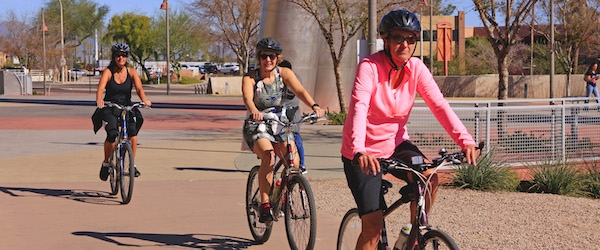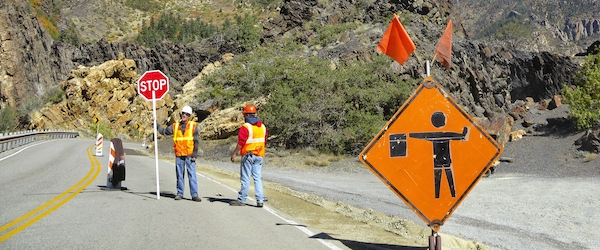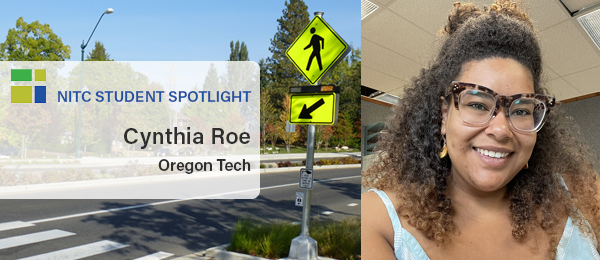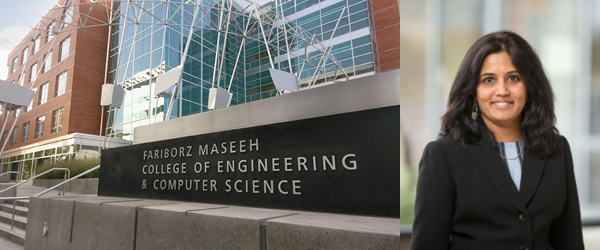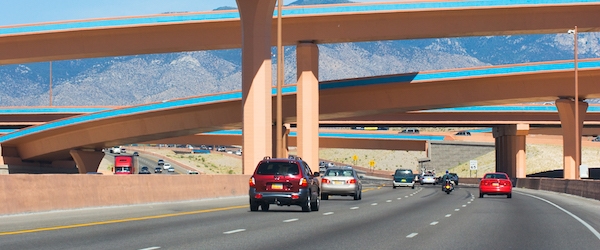We're proud to announce the publication of a new NITC dissertation: "Pedal the Old Pueblo: A Naturalistic Study on Bicycling in Tucson, AZ," by Joey Iuliano of the University of Arizona, Tucson.
"There are many different reasons to ride a bike – commuting, recreational riding, and athletic pursuits are a few. This dissertation work highlights the need to understand how different types of cyclists interact with the built environment and their experiences with other road users. Utilizing video cameras helps fill in this gap by capturing their lived experiences throughout the course of a ride. Coupling this footage with larger datasets, such as annual bicycle counts or Strava, can show planners where there are issues with safety and infrastructure design, how many others may be experiencing those issues, and helps with targeted improvements," Iuliano said.
City investments in bicycle infrastructure can improve residents' health and wellness, lower pollution, fight climate change, and reduce congestion. While transportation geography and planning have long focused on looking at how vehicles, goods, and services move across a region, there is a growing body of research focused on the movement of people through a city.
Iuliano's dissertation uses both the City of Tucson and Pima County, Arizona – a region of low-density development, traditionally focused on the car and now...
Read moreRoadside construction – be it a detour, a closed lane, or a slow weave past workers and equipment – work zones impact traffic flow and travel times on a system-wide level. The ability to predict exactly what those impacts will be, and plan for them, would be a major help to both transportation agencies and road users. Funded by the National Institute for Transportation and Communities, the latest Small Starts project led by Abbas Rashidi of the University of Utah introduces a robust, deep neural network model for analyzing the automobile traffic impacts of construction zones.
The top three causes of non-recurring traffic delays are crashes, work zones, and adverse weather conditions, with work zones accounting for 10% of all non-recurring delays. Precise work zone impact prediction could significantly alleviate fuel consumption and air pollution.
"Machine learning and deep learning are powerful tools to build different types of data and predict future situations. Using AI for analyzing data is the future of transportation engineering in general," Rashidi said.
The Utah Department of Transportation (UDOT) collects various types of data related to work zone operations. Working with these data, Rashidi and graduate research assistant Ali Hassandokht...
Read moreCynthia Roe is a civil engineering student at the Oregon Institute of Technology. Originally from Weed, California, Cynthia has been attending Oregon Tech in Klamath Falls since 2017 and is on track to graduate in 2022 with a bachelor’s and master’s degree in civil engineering. Cynthia is an extremely dedicated student who, in addition to her work with the ITE Student Chapter, served as the 2019-20 president of the American Society of Civil Engineers-Associated General Contractors Student Chapter and serves as a peer consultant in the Oregon Tech Student Success Center. She is the recipient of the 2019-2020 Oregon ITE Undergraduate Scholarship.
Connect with Cynthia on LinkedIn
Tell us about yourself?
Growing up in rural Northern California taught me the value of hard work and adaptability which has gotten me where I am today. I am currently a Graduate student at Oregon Tech with a passion for geotechnical and transportation engineering. I believe making connections with people and in different fields is what makes civil engineering work fulfilling...
Read moreA November 2020 article in Transportation Research Record addresses questions on parking supply and demand at transit-oriented developments (TODs) through comparative case studies of seven TODs in the U.S.A.
"Comparative Case Studies of Parking Reduction at Transit-Oriented Developments in the U.S.A." was authored by Reid Ewing, Keuntae Kim and Sadegh Sabouri of the University of Utah, with Fariba Siddiq of UCLA and Rachel Weinberger of Weinberger & Associates.
As far as the authors can determine, this is one of the first studies to estimate peak parking generation rates for TODs. Developments are often characterized in relation to “D” variables—development density, land use diversity, urban design, destination accessibility and distance to transit. The seven TODs studied in this project are exemplary when it comes to the Ds.
At the overall peak hour, just 51.2%–84.0% of parking spaces are filled. Because of limited use of shared parking, even these exemplary developments do not achieve their full potential. At the overall peak hour, parked cars would fill just 19.5%–69.4% of parking spaces if the developments were built to Institute of Transportation Engineers (ITE) standards.
With one exception, peak parking demand is less than 60% of the parking...
Read moreThe National Institute for Transportation & Communities (NITC) research consortium, led by Portland State University, has awarded $530,419 in total funding for seven new research projects spanning five universities. With the extension of the FAST Act, NITC received one additional year of funding, and given this limited time frame, we emphasized projects that were relatively short in length, relied on existing expertise, and would yield specific outputs and outcomes. Several of the projects have an equity focus, and much of the research aims to make it easier to get around multimodally and/or by walking. The seven new projects are:
- Rumore and Stoker focus on the unique transportation challenges of 'gateway' communities, or small towns adjacent to natural areas that attract large populations. Their previous...
Dr. Sirisha Kothuri of Portland State University Awarded 2021 APBP Research Professional of the Year
We're proud to announce that Dr. Sirisha Kothuri, Senior Research Associate at Portland State University, has been awarded the 2021 Research Professional of the Year award by the Association of Pedestrian and Bicycle Professionals (APBP). The APBP Professional of the Year Awards recognize the achievements of pedestrian and bicycle professionals made in the last twelve months in the private, public, research, and nonprofit sectors.
Dr. Kothuri’s contributions to advance the state of practice in bicycle and pedestrian safety research are outstanding. She has worked to inspire the next generation in our field and advance the professional knowledge of others through research around multimodal traffic operations, bicycle and pedestrian counting, and safety, with an emphasis in innovation in non-motorized transport.
Watch her accept the award:
"Transformative Transportation Survey Methods: Enhancing Household Transportation Survey Methods for Hard-To-Reach Populations," is a new article published in the September 2021 issue of Transportation Research Part D. It was co-authored by Amy Lubitow, a sociology faculty member at Portland State University, Erika Carpenter, a sociology graduate student, and Julius McGee, a faculty member in urban studies and planning.
The study explores the challenges that hard-to-reach populations face in completing household activity surveys. Researchers drew on qualitative data from hard-to-reach populations regarding the limits of the Oregon Household Activity Survey and found evidence that the survey methods lack social, cultural, and linguistic applicability for Black, Indigenous and other people of color, as well as low-income populations. The authors argue that Oregon’s household travel survey prioritizes certain ways of understanding and experiencing mobility that are, by default, exclusionary. The article concludes in sharing insights regarding how transportation professionals might ...
Read moreWe're proud to announce the publication of a new NITC dissertation: "Modeling Capacity: Multiple Weaving Areas," by Sheida Khademi of the University of Texas at Arlington.
"Traffic congestion on freeway systems is one significant concern in urban areas throughout the U.S.A. In this era, building new freeways to reduce congestion is less feasible due to the high capital and social costs. Thus, the effective management and operation of existing freeway facilities has become a preferred approach to reduce traffic congestion. Using the outcomes of this research, agencies can get an idea of which effective variable they should control to manage freeways' multiple weaving areas more efficiently; obtaining the highest capacity while planning for existing freeways. The results will be presented to DOTs and MPOs. The model would be highly useful and money-saving for these agencies, as they prefer to obtain higher capacity by managing existing freeways rather than buying right of ways," Khademi said.
Systematic, well-designed research provides the most effective approach to the solution of many problems facing highway administrators and engineers. Traffic congestion on freeway systems is one significant concern in urban areas throughout the U.S.A. In this era, building new freeways to...
Read moreAsh Avila, a 2022 TRB Minority Student Fellow, will be a junior this fall in the Sustainable Built Environment undergraduate program at the University of Arizona. She is working with NITC researchers Ladd Keith, Nicole Iroz-Elardo and Kristina Currans looking at the intersection of transportation and heat as it relates to climate adaptation planning for active travelers. This summer, Ash is working on analyses related to exploring transportation infrastructure and environmental influences of thermal comfort and evaluating some potential mitigations.
Tell us about yourself?
I’m a third year student at the University of Arizona majoring in Sustainable Built Environments with a minor in Spanish. I grew up in a small Southern Arizona border town which led to my interest in urban design, especially in communities with majority Latino populations. In my free time, I work in a small community garden and love to crochet.
What (or who) has influenced your...
Read morePolycentric development is being promoted to lessen problems of urban sprawl and reduce vehicle miles traveled (VMT). A new article published in the August 2021 issue of Applied Geography examines the difference between "morphological" and "functional" polycentricity in the Wasatch Front Region.
"Trip generation, trip chains and polycentric development in metropolitan USA: A Case Study of the Wasatch Front Region, Utah" asserts that walking friendly built environments are a critical concern in generating trip chains within urban centers, and public transit is an essential mode to connect centers.
Authored by Yehua Dennis Wei, Weiye Xiao and Yangyi Wu of the University of Utah Department of Geography, the paper draws on findings from the NITC project "Reducing VMT, Encouraging Walk Trips, and Facilitating Efficient Trip Chains through Polycentric Development."
The authors argue that moderately compact urban design helps trip generation more than extremely compact urban design. The study examines polycentric development in the Wasatch Front Region, Utah, from a morphological perspective using employment data and a functional perspective by analyzing trip chain behavior. Regarding trip chains, the researchers find that although the automobile is the dominant travel...
Read more
